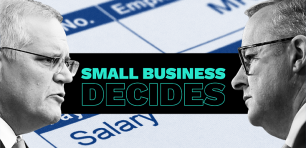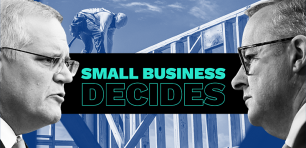
Source: The Conversation
For many Australians, the promise of cheap, reliable broadband remains a dream. So why is the National Broadband Network (NBN) still not delivering an outcome that was promised more than a decade ago when the NBN rollout commenced?
Let’s take a look at the current state of the NBN, and what the major political parties have announced in the lead up to the next federal election.
What’s available on the NBN?
The NBN uses a range of different technologies to connect users to the internet, depending on what area they’re in and what pre-existing network infrastructure is available there.
Of the 11.8 million premises able to be connected to the NBN, the approximate number of premises in each “technology footprint” is:
- 2.5 million for Hybrid Fibre Coaxial. This is where older coaxial cables installed for broadband and television services have been adapted for use in the NBN network;
- 4.7 million for Fibre to the Node/Basement (FTTN/B). This connection uses both copper and fibre optic wiring. The quality of the connection varies depending on the length of the copper cable, and the technology used to support the data transmission;
- 1.4 million for Fibre to the Curb (FTTC). This connection has fibre optic wiring closer to premises, allows faster data transmission than FTTN and services relatively fewer households;
- 1.1 million for Fibre to the Premises (FTTP) greenfields. This is a full fibre optic connection directly to the network from new premises. This provides reliable high-speed internet;
- 1 million for FTTP brownfields. This is a full fibre optic connection directly to the network from existing premises. This also provides reliable high-speed internet; and
- 1.1 million for fixed wireless/satellite. This is where data is beamed to the premises over radio frequency signals. This connection is usually targeted to regional areas and isn’t always stable.
What have the major parties promised?
On March 22, NBN Co announced further fibre upgrades would be rolled out as part of an ongoing $4.5 billion upgrade plan.
By the end of 2023, up to 8 million premises will become eligible to access the Home Ultrafast plan of between 500Mbps and 1Gbps. Currently, about 4.4 million NBN-connected premises can access this plan.
For the FTTP upgrade to occur, NBN Co has said eligible customers will need to place an order with a participating retail service provider for one of the three highest-speed tiers: 100, 250 or 1000Mbps.
Of the 4.1 million premises that can be connected to the NBN with FTTN, the current government and NBN Co plan provides an upgrade from FTTN to FTTP for two million of these premises.
Labor’s plan is to provide FTTP access to 3.5 million of these premises — and of the 1.5 million extra premises, 660,000 will be in regional Australia.
In response to the 2021 Regional Telecommunications Review, the Coalition announced a $1.3 billion investment to further upgrade regional, rural and remote telecommunications. If it wins the election, it has promised to provide $480 million to partly fund NBN Co’s upcoming $750 million upgrade of the fixed wireless network, to support regional communities.
This upgrade will shift 120,000 premises from the NBN Skymuster satellite network — which currently provides NBN connections to remote premises — to a fixed wireless connection. This would provide up to 250Mbps service to 85% of the premises in the satellite network.
Removing 120,000 premises from the NBN Skymuster satellite network will also improve the overall performance of the service, offering faster connection speeds and a download capacity boost from 55GB per month to 90GB per month.
Labor has also committed to supporting the planned NBN fixed wireless upgrade, and made a further commitment that “80% of the 7.1 million Australians living in regional and remote areas will have access to speeds of 100Mbps or more by late 2025. Currently this is only 33%.”
Too little, too late?
In the past, I’ve strongly criticised the Coalition’s decision at the 2013 federal election to move the NBN to a hybrid technology model that included obsolete technologies — namely FTTN, and to a lesser extent HFC and FTTC. The results of this decision are now measurable.
In 2013, the government said the hybrid technology model would mean the NBN could be completed for $29 billion by 2019, and that Australian households would have a minimum of 25Mbps by the end of 2016.
The true cost of the NBN rollout has now exceeded $57 billion, and will likely be about $70 billion by the time the FTTP upgrade is rolled out to some 93% of premises later this decade (hopefully).
But for now, the number of NBN-connected premises using FTTP remains stuck below 30%. And it’s difficult to see this figure rising quickly unless there is a rapid change in direction after the next federal election.
The costs of NBN plans remain high, and ultimately if consumers aren’t able to afford higher-speed tiers then the FTTP upgrade will likely not be taken up by the vast majority.
In the first half year financial report for 2022, NBN Co indicates 76% of customers are now on a 50Mbps speed tier or higher.
NBN Co’s financial report states average revenue collected per user is $46 per month, and earning before interest, taxes, depreciation, and amortisation (EBITDA) was $1.5 billion. Meanwhile, borrowings from banks increased to $24.7 billion from $23.8 billion in the previous reporting period.
A lack of equitable and universal access to the internet is another important issue. One aspect of universal access is for the internet to be provided for free to people who can’t afford NBN plans.
In November last year, Opposition Leader Anthony Albanese announced an initiative to provide free NBN connection for one year to 30,000 families with children under 15 at home, who didn’t have internet. No other political party has a comparable plan.
Streaming stress
Another factor that affects the higher-speed tier uptake is the failure by government regulatory bodies to mandate a minimum definition and quality for streamed media, particularly television and movies.
In Australia, the majority of streamed media, such as television and movies, is provided in a very poor quality standard definition format. The very-high media compression used by the online streaming industry (such as Netflix, Stan and Amazon Prime Video) means high-definition and 4K programs are displayed in poor quality.
In Europe and other parts of the world, television is now broadcast and streamed primarily using 4K-enabled technologies. Australians have been purchasing 4K-enabled televisions and other devices since 2017, but haven’t been able to fully use their capabilities.
Final thoughts
At this point, in the lead-up to the next federal election, Labor’s NBN policy is superior to that of the Coalition.
Under the current policies of both major political parties, the NBN will remain in government ownership. But this doesn’t mean it can’t be put up for private sale in the future, if existing policies change.
And the current government’s NBN policy does not alleviate the consequences of the mistakes it has made over the past nine years. The glacial pace at which the government and NBN Co are upgrading services means if the Coalition wins the next federal election, Australians can expect to have second-rate broadband for years to come.![]()
Mark A Gregory is an associate professor at RMIT University.
This article is republished from The Conversation under a Creative Commons license. Read the original article.
Handpicked for you

Election 2022: Why are wages finally set to grow, and what are the major parties promising?



COMMENTS
SmartCompany is committed to hosting lively discussions. Help us keep the conversation useful, interesting and welcoming. We aim to publish comments quickly in the interest of promoting robust conversation, but we’re a small team and we deploy filters to protect against legal risk. Occasionally your comment may be held up while it is being reviewed, but we’re working as fast as we can to keep the conversation rolling.
The SmartCompany comment section is members-only content. Please subscribe to leave a comment.
The SmartCompany comment section is members-only content. Please login to leave a comment.